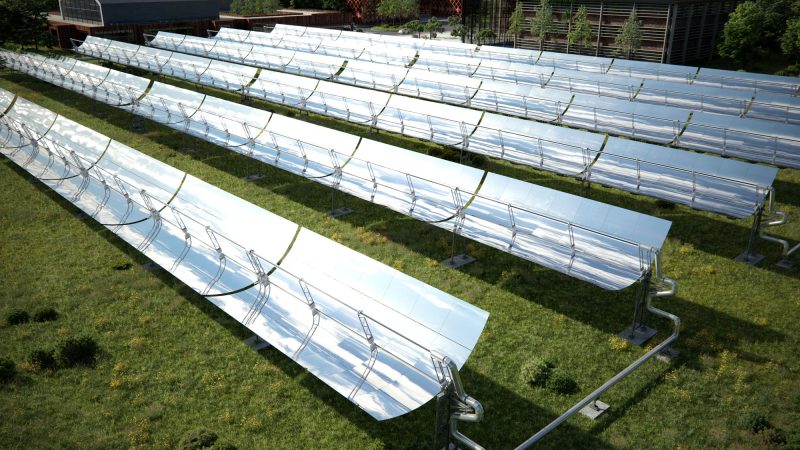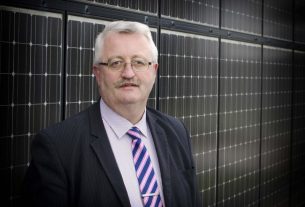The Belgian energy company Azteq installed the first pilot of an industrial solar mirror park in Antwerp last year. The park generates green heat from concentrated sunlight. During the European Industry & Energy Summit 2020 Dutch energy company Darel, Azteq’s strategic partner, will pitch on the technology that can make industrial heat more sustainable.
Industrial companies still derive the heat for their processes from the combustion of fossil fuels, such as natural gas. In the case of concentrated solar thermal energy (CST), parabolic mirrors concentrate sunlight and convert it directly into heat. The temperature can be as high as four hundred degrees Celsius. High-quality heat, and therefore suitable for industrial processes.
The technology produces three times more energy per installed square meter than a solar PV installation. The heat can easily be combined with other heat sources and stored in insulated vessels. The technology has no supply chain. The heat falls out of the air, so to speak. This makes it a completely green alternative to the industrial heat requirement. Therefore CST can make a significant contribution to reducing CO2 emissions.
Yield
Although solar heat sounds more like a solution for warmer countries, Azteq also counts with a thousand solar hours in Flanders and the Netherlands. Those hours should be enough to make the technology competitive with gas in the short term. Especially if the CO2 price will rise in the future due to CO2 taxes. Azteq and Darel are so convinced of the operation of CST that they offer this sustainable solution as ‘Heat as a Service’.
Azteq’s mirror installations are normally installed on the ground, but can also be placed on stands above a parking lot, for example. The required mirror surface area is particularly dependent on the energy demand. Azteq normally calculates with a capacity of five megawatts per hectare of mirror surface area.
Three pilot projects
Last year, Azteq placed one installation of 1,100 square meters of parabolic solar mirrors on the site of the logistics company Adpo in Beveren, Belgium. And a same installation at the chemical company Proviron in Ostend. The sun mirrors, each five meters long, are arranged in series and in two rows of 120 meters and move with the sun to concentrate a maximum amount of sunlight on collector tubes.
Adpo used gas for the production of steam to heat and clean tanks and containers. Temperatures in excess of 140 degrees Celsius are required for this purpose. The solar park replaces 500 megawatt hours of gas consumption every year. Proviron uses the steam at 180 degrees Celsius and twelve bar for chemical processes.
A pilot plant with solar mirrors is also under construction in Genk. In total, these three plants will produce between 1,260 and 1,390 megawatt hours of green heat per year. The three pilot projects will cost a total of 1.425 million euros, of which 819,000 euros will be financed by the Flemish Government.
Operation
The solar mirrors reflect 95 percent of the captured solar rays to the same point. This high degree of reflection is made possible by a special coating that reflects the rays and absorbs as little as possible. In addition, the mirrors move with the sun so that they make maximum use of the sunlight at any time of the day.
The heat is collected in the collector tube which consists of three parts: a glass outer tube, a metal inner tube through which oil flows and a vacuum between the two parts. The inner tube uses an energy-absorbing coating in order to lose as little heat as possible. The oil has a high thermal conductivity to absorb the heat as efficiently as possible.
The heat exchanger ensures that the captured heat can actually be used. The heat exchanger transfers the heat from the hot oil from the heat collector to the medium used in the customer’s production process. This can be thermal oil again, but also heat in the form of steam or hot water.
Heat lends itself very well to store for delayed use, up to five times more efficient than electricity. Azteq makes use of this property by installing buffer vessels that serve as a kind of heat battery. This balances the heat demand and supply and allows the heat to be used 24/7, even when the sun is not shining.




